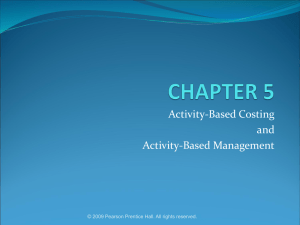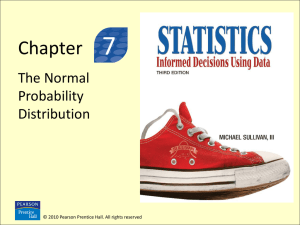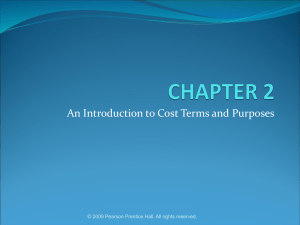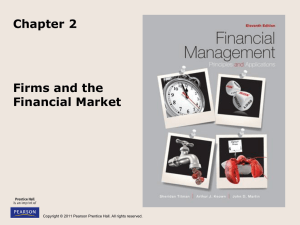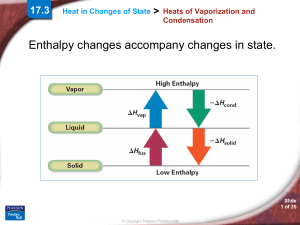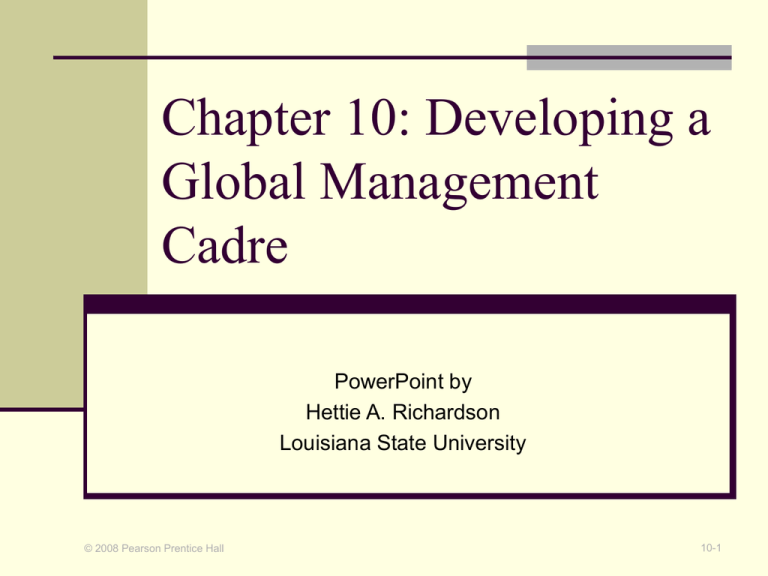
Chapter 10: Developing a
Global Management
Cadre
PowerPoint by
Hettie A. Richardson
Louisiana State University
© 2008 Pearson Prentice Hall
10-1
Maximising Global
Human Resources
Use international cadre through career
management to develop a top management
with global expirience
Develop effective global management teams
Promote the role of women and minorities
Work with the host-country labor relations
systems to ease the strategic implementation
and higher the productivity
© 2008 Pearson Prentice Hall
10-2
The Expatriate Transition Process
Entry transition (initial confrontation)
Adjustment (adaptation)
Home country
Exit transition (anticipatory socialization)
Entry transition (initial confrontation)
Adjustment (adaptation)
Host country
Exit transition (anticipatory socialization)
Home country or
New Host country
© 2008 Pearson Prentice Hall
Entry transition (initial confrontation)
Adjustment (adaptation)
Exit transition (anticipatory socialization)
10-3
Preparation, Adaptation,
Repatriation
Reverse culture shock occurs because
Reintegration is difficult
Expatriates are often “out of sight, out of
mind”
Feelings of alienation from “home”
Poor management of expatriates means
fewer will be willing to take assignments
© 2008 Pearson Prentice Hall
10-4
Successful Repatriation
Programs
Mentor programs
Career planning and guidance units
A system for maintaining contact with
expatriates
© 2008 Pearson Prentice Hall
10-5
The Role of the Expatriate
Spouse
60% of expatriate spouses are employed
before the assignment, but only 21% are
employed during the assignment
Spouse adjustment is more likely when:
The firm seeks the spouse’s opinion
The spouse initiates predeparture training
© 2008 Pearson Prentice Hall
10-6
Reasons for Poor Expatriate
Retention
Expatriates are highly marketable
Overseas compensation packages are more
generous than those at home
Expatriates feel unappreciated at home and
on assignment
© 2008 Pearson Prentice Hall
10-7
The Role of Repatriation in
Developing a Global Cadre
Successful expatriates acquire skills:
Managerial skills
Tolerance for ambiguity
Multiple perspectives
Ability to work with and manage others
Ability to do business overseas
© 2008 Pearson Prentice Hall
10-8
Global Management Teams
The term Global Management Team
describes
a collection of managers
in or from several countries
who must rely on group collaboration
if each member is experience optimum
success and goal achievement
© 2008 Pearson Prentice Hall
10-9
Global Management Teams
The effects of multicultural teams:
Domestic: Mostly internal operations
International: Relationships among buyers,
sellers and other intermediaries
Multinational: Internal, across culturally
diverse managers and technical people
© 2008 Pearson Prentice Hall
10-10
Global Teams in the Global
Enterprise
© 2008 Pearson Prentice Hall
10-11
Challenges for “Virtual” Global
Teams
Geographic dispersal
Cultural differences
Language and communication
Technology
© 2008 Pearson Prentice Hall
10-12
Future Needs for Virtual Training
How to lead a virtual team meeting
How to coach and mentor virtually
How to monitor team progress
How to use communication technologies
How to manage team boundaries
© 2008 Pearson Prentice Hall
10-13
Criteria for Evaluating
Transnational Team Success
Do members work together with a common
purpose?
Has the team developed a common language or
procedure?
Does the team build on what works, learning to
identify the positives?
Does the team spell out matters within the limits of
the cultural differences involved?
Do members recognize the impact of their own
cultural programming on individual and group
behavior?
Does the team have fun?
© 2008 Pearson Prentice Hall
10-14
Managing Global Business Teams
© 2008 Pearson Prentice Hall
10-15
The Role of Women in
International Management
© 2008 Pearson Prentice Hall
10-16
The Role of Women in
International Management
Even US managers are reluctant to give
women expatriate assignments
Evidence suggests foreigners are viewed first
as foreigners
© 2008 Pearson Prentice Hall
10-17
Working with Local Labor
Relations Systems
Labor relations and collective bargaining
Three dimensions to consider:
The participation of labor in firm affairs
The role and impact of unions
Human resource policies
© 2008 Pearson Prentice Hall
10-18
Working with Local Labor
Relations Systems
Labor relations constraints:
Wage levels set by unions
Limits on the firm’s ability to vary
employment levels
Limitations on the global integration of
operations
Example: Europe
© 2008 Pearson Prentice Hall
10-19
Organized Labor Around the
World
Union membership is in decline
Industrial, craft, conglomerate, and general
unions
Labor unions must be understood within their
given contextual environment
© 2008 Pearson Prentice Hall
10-20
Management Focus: China
Empowers Unions
The “iron rice bowl”
China is adopting a new law to empower
unions and protect workers’ rights
Foreign companies operating in China are
protesting this move
© 2008 Pearson Prentice Hall
10-21
Convergence in Labor Systems
Forces for convergence:
Merger of ICFTU and WCL
MNC desire for consistency and
coordination
Increased monitoring of labor conditions
Political and cultural shifts
© 2008 Pearson Prentice Hall
10-22
Divergence in Labor Systems
Most MNCs still adapt practices to national
traditions
The role of political ideology, overall social
structure, and history of industrial practices
© 2008 Pearson Prentice Hall
10-23
NAFTA and Labor Relations in
Mexico
Labor issues subject to review under NAFTA:
minimum wages, child labor, and safety
Workers believe MNCs use blacklists,
intimidation and economic pressure to
oppose union organization
Example: General Electric
© 2008 Pearson Prentice Hall
10-24
Comparative Management in Focus:
Labor Relations in Germany
Codetermination law (mitbestimmung) is
coming under pressure
Union works councils are “co-managers”
German unions are increasingly willing to
make concessions
Linde and IG Mettal
© 2008 Pearson Prentice Hall
10-25
Comparative Management in Focus:
Labor Relations in Germany
The influence of Daimler-Chrysler and the US
The German model holds that competition
should not be based on cost
What is the value of codetermination?
© 2008 Pearson Prentice Hall
10-26




